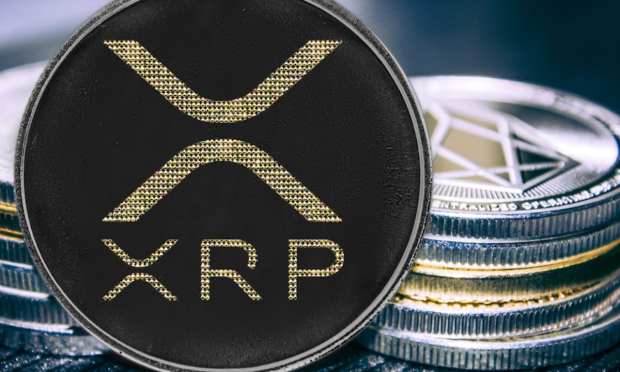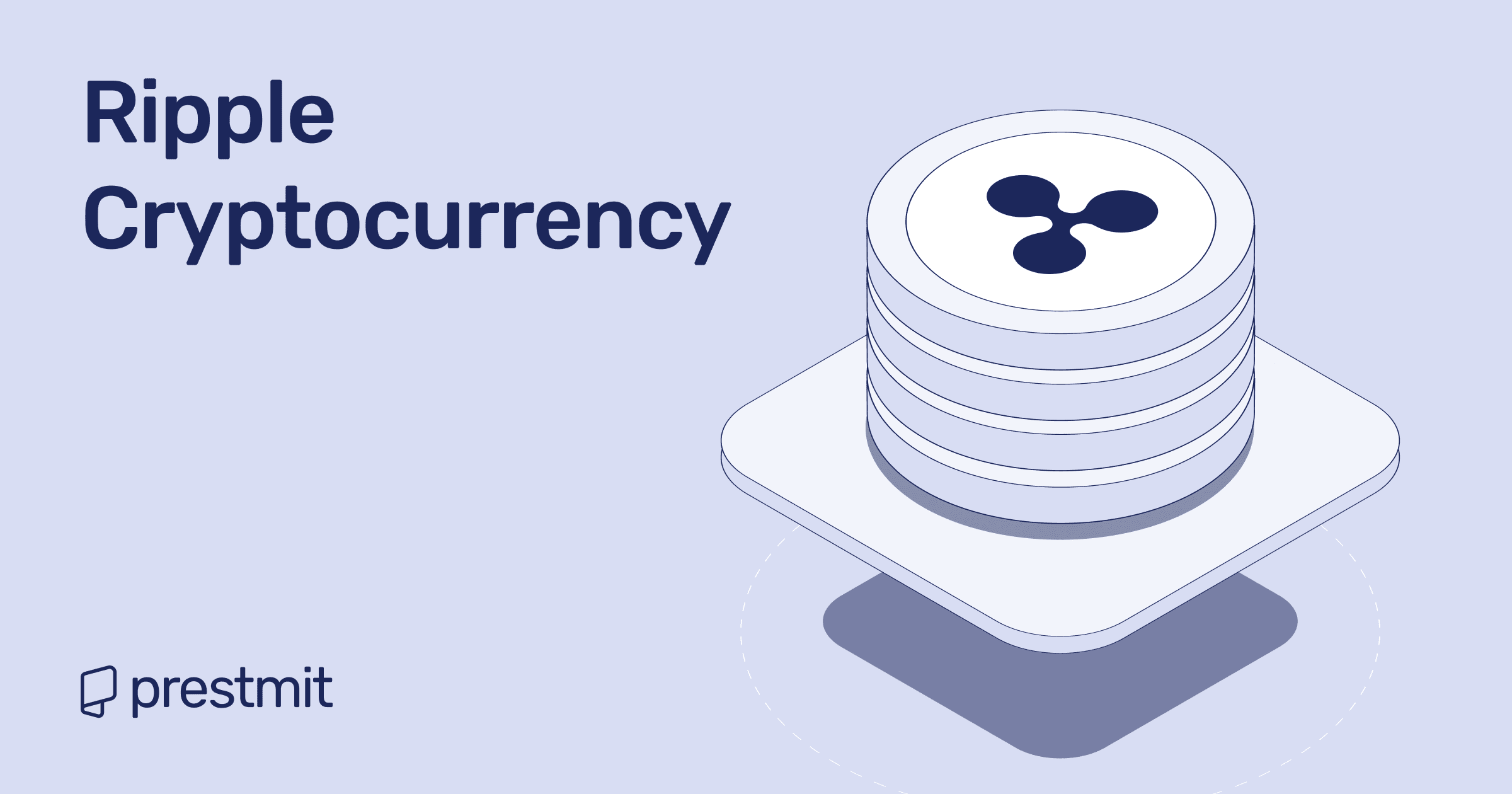Table of Contents
A few years ago, the global financial system used to move trillions of dollars every day with infrastructure that was slow, expensive and outdated. Sending money across borders can take several days with multiple intermediaries and higher fees. Ripple emerged as one of the solutions to this problem by offering a faster and more efficient way to move value across the world.
Ripple didn’t emerge just like other cryptocurrency like Bitcoin which is largely viewed as digital gold or Ethereum which powers decentralized applications. Ripples takes a different approach. Its primary goal is focus on solving the inefficiencies of cross-border payments. With Ripple, transactions that once took days can be completed in seconds at just a fraction of the cost.
And as the digital economy expands, understanding Ripple is crucial not only for crypto enthusiasts but also for anyone interested in the future of global payments. This guide explores everything that you need to know about Ripple, including its origin, features and adoption giving you a clear view of why it matters today.
What is the Origin of Ripple?

Ripple story began in 2012 with the founding of Ripple Labs by Jed McCaleb and Chris Larsen, the company behind the technology. The idea behind this was quite simple but ambitious, to create a global payment system that could move money as fast and efficient as information flows across the internet. Ripple distinguished itself from the many crypto projects launched purely as decentralized experiments, Ripple vision was grounded in solving the slow and costly nature of international transactions.
Ripple introduced XRP, it native digital asset which created a way to settle payments instantly without relying on multiple banking intermediaries. This meant that two parties anywhere in the world could exchange value within seconds instead of waiting days for traditional wire transfers.
Key milestones pushed Ripple into the spotlight. By 2014 the project had gained attention for positioning itself not as a competitor to global banks but as a partner by developing solutions that are integrated directly with existing financial systems. Ripple quickly attracted interest from institutions looking for faster and cheaper ways to move money.
Strategic partnerships and pilot programs with banks and payment providers also helped Ripple to establish credibility which set it apart from a flood of speculative crypto projects of that era.
How Does Ripple Work?
Ripples runs on the XRP Ledger, a blockchain designed for speed and low cost transactions. Instead of mining like Bitcoin or Ethereum which rely on energy intensive infrastructure, it uses a consensus mechanism where independent validators confirm transactions within seconds. This allows the network to process transactions in just a few seconds while maintaining low cost and high security.
The system uses XRP as bridge currency for cross-border payments. For example, if a bank in Nigeria wants to send money to the United States, Ripple can convert the naira to XRP, move it across the ledger within seconds and then convert it into US dollar on the receiving end all in a matter of a seconds and at a fraction of the usual cost, without any intermediaries.
The XRP ledger achieves this through its consensus mechanism. Transactions are verified by a network of independent validators, trusted participants that confirm the order and validity of each transaction. Unlike the proof-of-work system which consumes massive amounts of energy, Ripple consensus is lightweight, efficient and capable of handling 1,500 transactions per second. This makes Ripple not only faster but also more sustainable than many traditional cryptocurrencies.
Key Features of Ripple
Ripple is built to solve the shortcomings of traditional payment systems, and its features make it one of the most practical blockchain solutions in global finance. Some of these features are;
1. Speed of Transactions
One of Ripple’s greatest strengths is its settlement time. Transactions are usually confirmed on the XRP ledger within 3-5 seconds regardless of the distance between the sender and receiver. This speed gives Ripple a clear advantage over traditional systems like SWIFT where international transfers can take days and even over other cryptocurrencies that struggle with network congestion.
2. Low Transaction Cost
Ripple transactions are not only fast but also highly affordable. The cost of sending money through Ripple is usually less than a fraction of a cent compared to the high fees charged by banks and remittance companies. This makes it very useful for cross border transfer without heavy charges and poor exchange rates.
3. Scalability
Ripple was built to scale unlike many blockchain networks that slow down under heavy use. The XRP ledger can process over 1,500 transactions per second with mainstream financial systems like Visa. This capacity ensures that Ripple can support not only individual transfer but also institutional level payment flows without sacrificing speed or efficiency.
4. Eco-friendly Design
Where Bitcoin and similar cryptocurrencies depend on proof-of-work mining consuming enormous amounts of electricity, Ripples consensus mechanism is lightweight and energy efficient making it more sustainable and appealing in a world where environmental impact is an increasing concern for both companies and regulators.
5. Security and Transparency
Ripple is built on a public and transparent blockchain. Every transaction is permanently recorded which makes it traceable and resistant to tampering. At the same time, the use of independent validators ensures that the network remains decentralized and secure providing users and institutions with confidence.
Institutional Adoption of Ripple
1. Banks and Financial Institutions
Ripple technology has been adopted by several large banks and financial service providers around the world. Institutions in Asia, Europe, the Middle East and America have tested or deployed Ripples payment solutions to improve settlement times and cost.
2. Partnerships with Remittance Providers
Global remittance companies have also partnered with Ripple. These partnerships aim to make sending money abroad cheaper and faster especially for individuals in emerging markets who depend on remittances as a lifeline. By leveraging Ripple technology, these providers can offer more competitive services compared to traditional wire transfers.
3. RippleNet Advantage
At the heart of Ripple adoption is RippleNet, the company network of banks, payment providers and financial institutions. RippleNet acts as a unified platform where participants can connect and transact seamlessly. It also provides real time settlement, improved transparency and lower operating costs.
4. Liquidity through XRP
One of the biggest challenges that institutions face in cross border payments is maintaining liquidity in multiple currencies. Ripple addresses this with on demand liquidity (ODL), a service that uses XRP as a bridge currency. Instead of funding accounts in foreign banks, institutions can use XRP to source liquidity instantly. This reduces overhead and frees up capital.
By partnering with established players in global finance and offering practical solutions through RippleNet and XRP, Ripple has positioned itself as a bridge between blockchain, innovation and mainstream financial infrastructure. Its growing adoption demonstrates that Ripple is not just theory, it is already reshaping how money moves around the world.
Uses of Ripple
1. Everyday Payment and Remittances
For individuals, Ripple offers a faster and cheaper way to send money compared to traditional remittance services. Instead of paying high fees and waiting days for funds to clear, Ripple enables near instant settlement at a fraction of the cost. This is particularly useful in regions where remittances are a major source of household income.
2. Cross – Border Money Transfer
Ripple’s primary use case is in international payments. By using the XRP ledger, banks and payment providers can transfer value across borders in seconds. This solves the inefficiencies of the legacy SWIFT system which relies on multiple intermediaries and takes days to process. Ripple provides a more efficient infrastructure for moving money internationally.
3. Liquidity Solutions for Businesses
Through its on Demand Liquidity (ODL) service, Ripples allows companies to access liquidity without pre-funding foreign accounts. XRP serves as a bridge currency that enables businesses to convert from one fiat currency to another instantly. This reduces cost, free up working capital and simplifies cross border trade for companies operating in multiple markets.
4. Investment and Trading in XRP
Beyond payment, XRP is actively traded on global cryptocurrency exchanges. Investors and traders see it as both a speculative asset and digital currency with real world utility. Its high liquidity and integration into financial institutions give it a unique position in the crypto market compared to purely speculative coins.
5. Future Applications in DeFi
As decentralized finance (DeFi) expands, Ripples technology has the potential to play a role in powering decentralized exchanges, lending platforms and other blockchain based financial services. With its fast settlement times and low transaction fees, XRP could serve as an efficient medium of exchange within DeFi ecosystems.
Taken together, these uses show that Ripple is more than a cryptocurrency, it is a payment protocol with broad applications across individual, business and institutional finance while also holding potential in the growing Defi space.
Frequently Asked Questions (FAQs) about Ripple Cryptocurrency
Is Ripple the same as XRP?
No. Ripple is the company referred to as the Ripple Labs and its payment protocol while XRP is the digital asset that powers transactions on the Ripple network.
Is Ripple a good investment?
Ripple investment potential depends on regulatory developments, institutional adoption and overall crypto market trends. While XRP has strong use cases, investors should research carefully and consider the risk of volatility.
Can I use Ripple for personal transactions?
Yes. While Ripple was built for institutions, individuals can also use XRP to send and receive funds quickly, trade it on exchanges or hold it as an investment.
What is RippleNet?
RippleNet is a global network of banks and payment providers that use Ripple technology to process international payments faster and more efficiently than legacy systems.
What are the risks of investing in Ripple?
The main risks include regulatory uncertainty, competition from other payment solutions and crypto market volatility. While Ripple technology is strong, external factors can impact the value of XRP.
Conclusion
Ripple represents more than a digital currency; it is a payment solution reshaping how money moves across borders. By combining blockchain efficiency with the needs of traditional finance, Ripple has positioned itself as a bridge between two worlds that once seemed incompatible. Its speed, low transaction costs, and growing institutional adoption show that blockchain can deliver real-world impact far beyond speculation.
It doesn’t aim to replace banks but to make them faster and more efficient, a reason why major financial institutions have taken notice.Still, Ripple’s journey is ongoing. Regulation, competition, and market shifts will continue to shape its path. For individuals and businesses, the best approach is to keep learning, stay updated, and approach Ripple with informed caution.
Last updated on September 10, 2025

